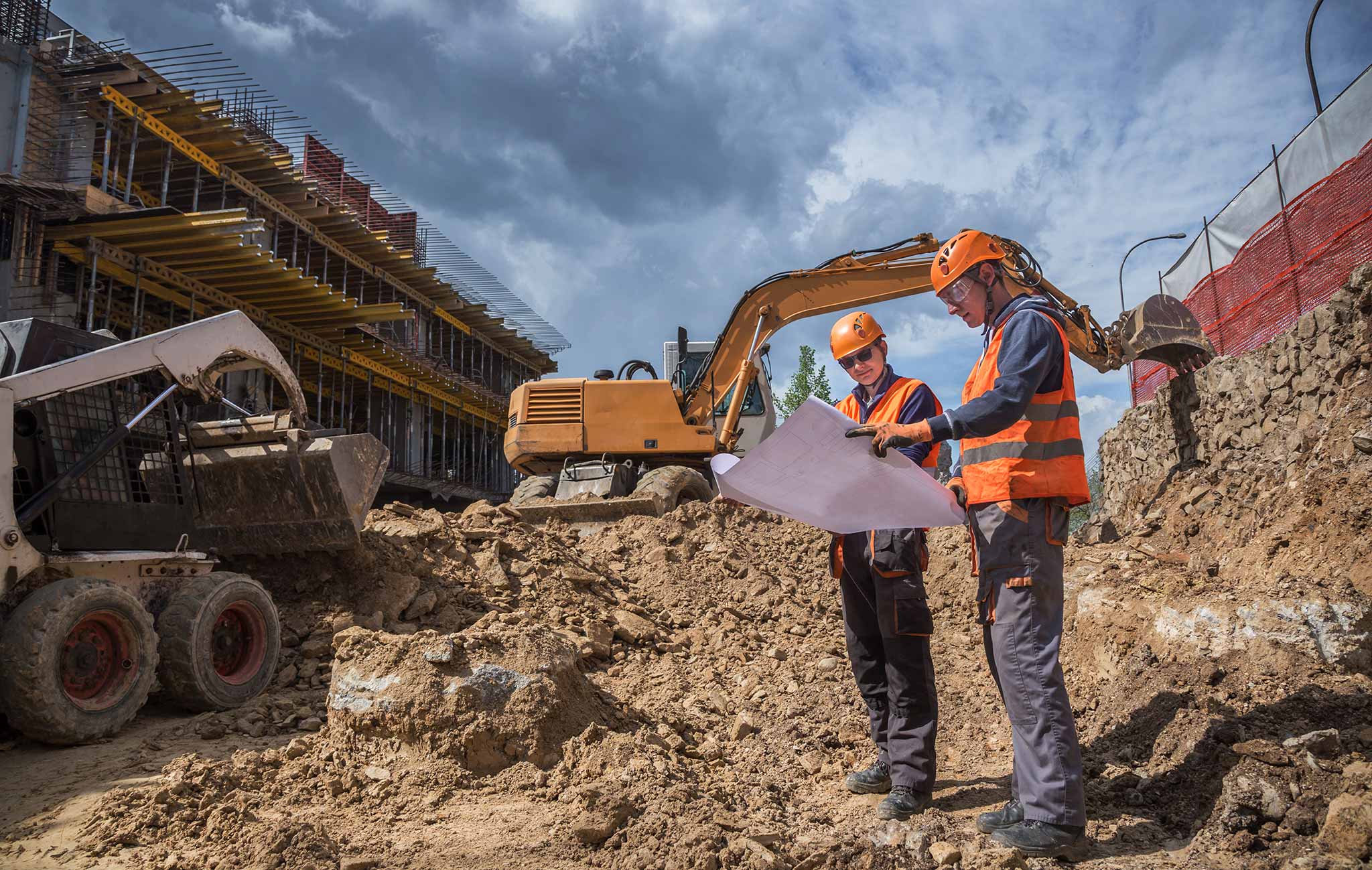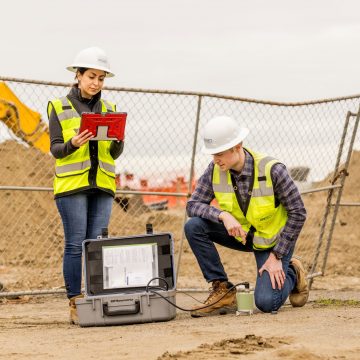Crucial Qualities of Effective Civil Consulting Engineers
Wiki Article
A Thorough Summary of the Key Duties of Geotechnical Engineers in Site Characterization and Ground Renovation Methods for Design Solutions
Geotechnical designers are essential to the effective execution of engineering jobs, entrusted with the essential duties of site characterization and the application of ground improvement methods. Their work involves a detailed evaluation of subsurface problems, utilizing various testing techniques to determine dirt and rock properties. This fundamental knowledge not only informs style decisions but likewise minimizes possible risks associated with ground instability. As we check out the complex roles of these professionals, it ends up being evident how their experience shapes the safety and efficiency of engineering remedies. What particular techniques and assessments stick out in this important technique?Function of Geotechnical Engineers
Geotechnical engineers play a critical function in the style and building of framework by examining the actions of soil and rock under the surface area - geo tech engineering. Their responsibilities incorporate examining subsurface problems to inform design decisions that make certain structural stability and safety and security. By performing in-depth analyses of soil buildings, including shear compressibility, strength, and leaks in the structure, geotechnical designers supply vital information that influences the choice of proper building materials and strategiesAlong with examining soil mechanics, geotechnical engineers are tasked with identifying possible risks such as landslides, sinkholes, and ground settlements. Their know-how helps mitigate dangers connected with these geotechnical phenomena, consequently safeguarding both the atmosphere and public safety. They additionally collaborate carefully with other engineering disciplines, ensuring that geotechnical factors to consider are integrated into general task design.
In addition, geotechnical engineers take part in the examination of existing frameworks, providing recommendations for retrofitting and repairs when essential. Their extensive understanding of soil-structure interaction is vital for the advancement of sustainable facilities services. Generally, the role of geotechnical engineers is integral to the effective awareness of building and construction projects, ensuring they are secure, long lasting, and compliant with governing requirements.

Website Characterization Procedures
Reliable website characterization processes are necessary for understanding the subsurface conditions that influence project design and implementation. Geotechnical designers utilize an organized approach to collect, review, and translate information regarding rock, soil, and groundwater features. This process starts with a comprehensive evaluation of existing literary works and archaeological site data, supplying insights right into previous website conditions and possible challenges.
Information evaluation adheres to fieldwork, where designers utilize geostatistical approaches to analyze searchings for and develop geological models. This modeling aids in determining potential geohazards, such as landslides or liquefaction, which are vital for threat assessment. Ultimately, the outcomes educate layout suggestions, making sure that design solutions are both secure and reliable. With attentive website characterization, geotechnical designers lay the groundwork for effective task execution, enhancing and lessening unforeseen complications source allowance.
Soil and Rock Testing Approaches
While comprehending subsurface problems is vital, the option of appropriate dirt and rock testing approaches is equally essential for accurate evaluation and geo tech engineering design. Geotechnical designers utilize a variety of testing techniques to evaluate the mechanical and physical residential or commercial properties of soil and rock products.Research laboratory tests, such as Atterberg limitations, grain dimension evaluation, and unconfined compressive strength examinations, offer crucial data on soil actions under various wetness conditions and filling situations. These tests help establish soil category and predict negotiation or shear strength characteristics essential for structure design.
In-situ testing techniques, including Criterion Infiltration Tests (SPT), Cone Penetration Examinations (CPT), and pressure meter tests, permit designers to gather information directly from the ground. These approaches offer useful understandings right into the soil's density, uniformity, and stratification without the need for comprehensive tasting.
Rock screening typically includes core sampling and research laboratory evaluation to evaluate properties like uniaxial compressive strength and rock top quality classification (RQD) Together, these soil and rock testing techniques enable geotechnical designers to make informed choices concerning site-specific difficulties, making sure the safety and security of design solutions.
Ground Improvement Techniques
Ground renovation methods are essential for enhancing the design buildings of dirt, therefore increasing its load-bearing capability and lowering negotiation. These methods are important in attending to challenges provided by weak or troublesome dirts, which can considerably affect the stability and resilience of structures.Different ground improvement strategies are used, consisting of compaction, grouting, and soil stabilization. Compaction includes enhancing the density of dirt through mechanical means, which boosts its shear strength and decreases compressibility. Grouting, on the various other hand, includes infusing a fluid material right into the ground to fill up spaces and enhance dirt communication. This technique is particularly effective for dealing with loosened sands or fractured rock.
Soil stablizing encompasses a variety of techniques, from chemical ingredients to mechanical therapies, targeted at enhancing the dirt's resistance to disintegration and deformation. Methods such as lime stabilization or concrete blending alter the properties of the dirt at a fragment level, boosting its general efficiency.
Importance of Geotechnical Assessments
Geotechnical assessments play a crucial duty in the preparation and style of design jobs, as they give vital information regarding the subsurface conditions. Recognizing soil residential properties, rock formations, groundwater degrees, and prospective geohazards is important for making sure the security and security of structures. These evaluations enable engineers to make educated choices regarding website selection, style criteria, and construction methods.
The relevance of geotechnical analyses extends past initial job phases; they are instrumental in risk administration and cost performance. By determining potential issues early, such as dirt settlement, slope instability, or extreme groundwater, designers can develop proper reduction techniques, decreasing the likelihood of pricey hold-ups and structural failures. Furthermore, these analyses sustain compliance with regulative needs and enhance the sustainability of design techniques.

Conclusion
To conclude, geotechnical engineers are vital to making certain the safety and security of design jobs with comprehensive site characterization and ground renovation methods. geo tech engineering. Their organized strategy to evaluating subsurface problems, combined with their recommendations for reliable ground modification, substantially enhances dirt homes and load-bearing capability. The knowledge of geotechnical engineers not just assists in informed project planning but also makes certain conformity with laws and cultivates effective communication amongst stakeholders, inevitably adding to effective engineering end resultsGeotechnical engineers play a crucial duty in the design and building and construction of framework by evaluating the habits of soil and rock underneath the surface area. By carrying out comprehensive evaluations of dirt buildings, consisting of shear compressibility, toughness, and permeability, geotechnical engineers provide crucial data that influences the choice of proper building and construction materials and methods.
In addition to examining dirt mechanics, geotechnical engineers are entrusted with identifying potential risks such as landslides, sinkholes, and ground settlements. Geotechnical engineers use a systematic approach to collect, review, and interpret information regarding groundwater, soil, and rock characteristics. By determining prospective concerns early, such as dirt negotiation, incline instability, or extreme groundwater, engineers can create proper mitigation methods, lowering the probability of costly delays and structural failures.
Report this wiki page